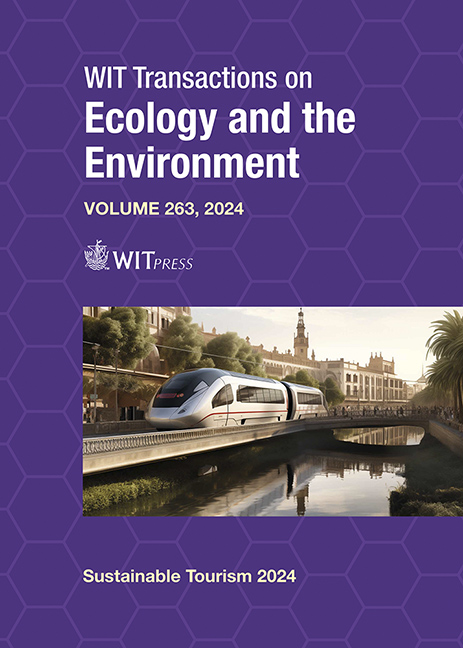PUBLIC TRANSPORT AS AN OPPORTUNITY TO PROMOTE TOURIST HOMES IN URBAN PERIPHERIES: THE CASE OF MADRID, SPAIN
Price
Free (open access)
Transaction
Volume
263
Pages
13
Page Range
77 - 89
Published
2024
Paper DOI
10.2495/ST240071
Copyright
Author(s)
DANIEL GÁLVEZ-PÉREZ, BEGOÑA GUIRAO, PATRICIA VALENZUELA, ARMANDO ORTUÑO, INMACULADA MOHÍNO, FERNANDO DE MINGO, MANUEL DE LA CALLE
Abstract
The implementation of the collaborative economy in the tourist sector has led to a partial relocation of the accommodation (traditionally concentrated on hotels and resorts) through tourist homes scattered all over the city. Although some aspects of this new phenomenon (such as its impact on hotel occupation, the housing and long-time rental price) have been already analysed, socioeconomic and urban factors influencing tourists’ accommodation choice need to be explored. This research aims to analyse and quantify the role of the urban public transport network on the occupation and promotion of tourist homes in contrast to other urban factors. The research is based in Madrid, a first-class urban tourist destination with a dense and efficient public transport system which may be an opportunity for peripheral accommodation locations compared to homes located in the city centre (usually at higher fares). Based on information of tourist homes in the city of Madrid provided by AirDNA for the period 2022–2023 (number of housings, fares, occupation rates, type of home, etc.), this research develops a methodology that relates the role of the urban public transport network and the occupation of tourist homes. To achieve this, linear regression models have been applied to two groups of accommodations separately: those located in the city centre and those located in the periphery. Results show that, for all accommodations, occupancy is strongly dependent on the average daily rate and the rating. However, for the group of accommodations located in the periphery, the distance to the nearest bus station also exhibits significant importance, highlighting the role of public transportation in decentralising the concentration of tourist accommodations and promoting greater sustainability in tourism within our cities.
Keywords
tourist homes, collaborative economy, urban mobility, social cohesion, public transport





